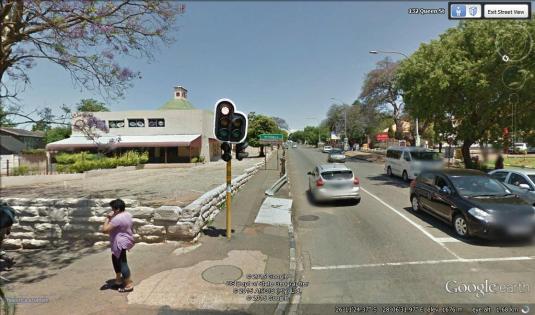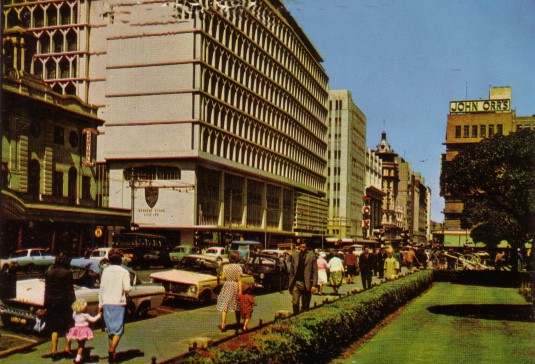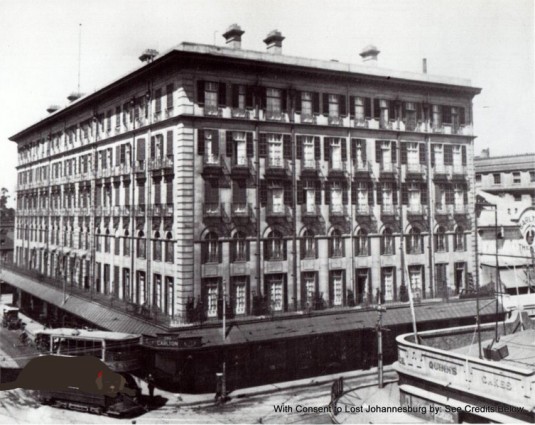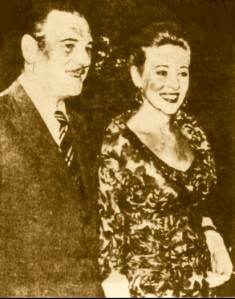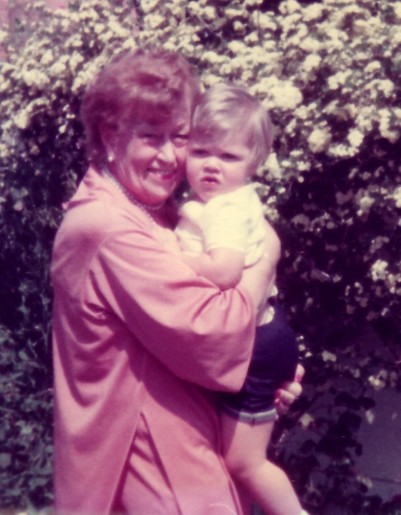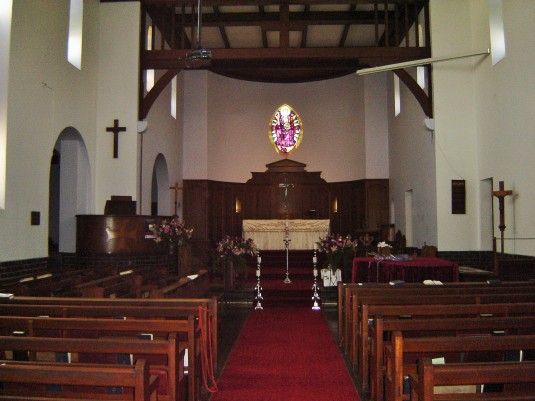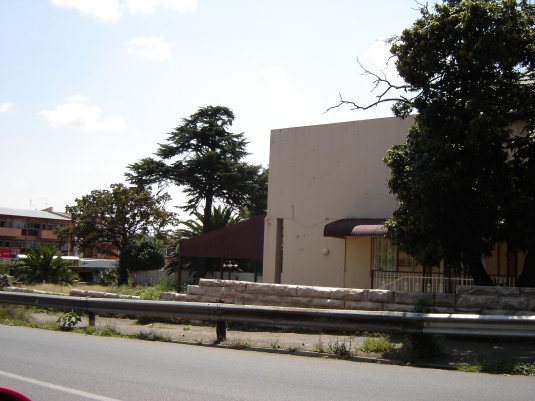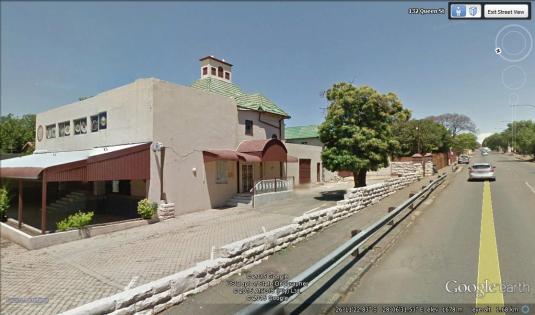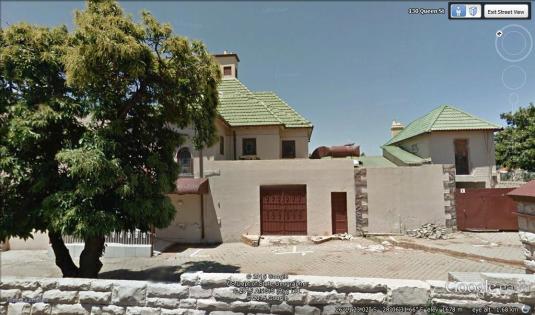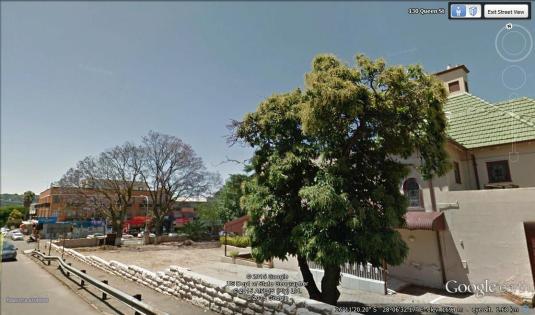Andrew McDougall read this story yesterday (23 July 2015) on his programme The Canon Piper on Radio Today 1485 Here is a link to the programme: The Canon Piper 23 July 2015.
I was born in Scotland and lived on and off in the United Kingdom for some years as well as in other places in South Africa, but I have lived in the suburb of Kensington, Johannesburg for most of my life since 1957. I came to South Africa from Scotland with my parents when I was five years old and spent my early years in Vanderbijl Park, a small town in the Vaal Triangle, where we knew most people. I cycled to the Vaal High School, coasting at speed down Faraday Boulevard in the morning and struggling uphill in the heat of the early afternoon.
In 1957 my parents made a sudden move to Johannesburg when my father was offered a job at Rogers-Jenkins with an old work colleague. The engineering company was situated in the Jeppe Dip of Main Street. Even in those days my parents were worried about the high crime rate in Johannesburg in comparison to our relatively crime-free small town. They put our furniture into storage and we lived at the Valmeidere Private Hotel in Roberts Avenue opposite Jeppe Boys’ High until we found somewhere permanent to live. I transferred to Form II (Grade 9) at Jeppe Girls’ High for the last term of that year. I was 13 years of age at the time the world was marvelling at the sight of Sputnik circling the earth each night. My parents thought the roads in Kensington were far too busy for me to ride my bicycle to school, so I caught the tram instead. The tramlines were in the middle of the road, so I prayed that oncoming cars would slow down long enough to give me time to reach the tram and mount its steep iron steps. On the first day at my new school I dodged the oncoming traffic as I walked halfway into the middle of Roberts Avenue to board the tram, and clung to one of the overhanging leather straps as the tram hurtled unsteadily down Roberts Avenue towards my new school.  The conductor played a big part on the trip. He forced his way through the passengers to collect money for fares, giving tickets and change from the elaborate stainless steel machine attached around his neck with a leather strap, shouting, “Move further down the car,” to allow yet more people to squeeze into the tram on its peak-hour journey. “Hold tight, please! Move forward in the car. Kaartjies asseblief. All tickets please..” The ticket was to be guarded with one’s life in case the dreaded ticket inspector came on board. I didn’t know what the punishment would be if I lost my ticket, but I thought it must be jail at least, if not death by hanging.
The conductor played a big part on the trip. He forced his way through the passengers to collect money for fares, giving tickets and change from the elaborate stainless steel machine attached around his neck with a leather strap, shouting, “Move further down the car,” to allow yet more people to squeeze into the tram on its peak-hour journey. “Hold tight, please! Move forward in the car. Kaartjies asseblief. All tickets please..” The ticket was to be guarded with one’s life in case the dreaded ticket inspector came on board. I didn’t know what the punishment would be if I lost my ticket, but I thought it must be jail at least, if not death by hanging.
In those days there was no such thing as off-the-shelf school dresses or gym slips. My mother had to buy material and take me to a recommended school dressmaker to be measured for my new uniform so I had to wear my Vaal High uniform until the new uniform was made. Girls in my new class eyed me curiously. One asked in hostile tones why I hadn’t gone to Queen’s High as the Vaal High uniform I wore was almost identical to that of Queen’s High. A kinder girl took pity on me and asked me to join her and her friends to eat my sandwiches with them at break. On the first day I wore my brand new Jeppe Girls’ High School uniform, I carried my regulation panama hat adorned with a band in school colours.
At the Vaal High, hats had not been a compulsory part of the uniform, although my mother had always insisted I should wear one to protect my pink and white Scottish complexion from the harsh sun of the Transvaal High Veld. The only vacant seat on the tram that morning was next to a large, fierce-looking Jeppe girl who sported a severe pudding basin haircut under her hat. She had a prefect badge attached to the front of her green school dress. She glowered at me in disgust, seemingly at a loss for words. I summoned up a watery smile, hoping to break the ice.For some reason she was extremely annoyed with me and I had no idea why. Eventually she managed to speak through her rage. “Why aren’t you wearing your hat? You are letting the school down. Put it on at once.” “I’m new. It’s my first day wearing my uniform. I didn’t know I had to wear it,” I muttered, pulling the offending object onto my head, the elastic tight under my chin. The girl softened slightly. “If you weren’t new you would be in detention this afternoon, writing out two hundred lines. Never let me see you without it again.” I learnt that it was a mortal sin to be seen without one’s hat at Jeppe Girls’ High! Apart from the fact that the girls don’t have to wear hats any more, uniforms of the Jeppe schools have not changed much in the last fifty years but they can be bought off the shelf now. The hard-working Kensington dressmakers of days gone by have long since vanished.
The red tram trundled on its way to school down the hill in Robert’s Avenue, past the suburban houses, interspersed with the Methodist Church on the right, the Kensington Hall on the left and the old low-rise, facebrick block of flats on the corner of Juno Street, which was used as an exterior shot on Egoli, M-Net’s erstwhile soapie. Soon I was venturing further afield on the tram, even braving the trip to the crowded city on Saturday morning.
Kensington remains much the same today as it was in 1957 with its neat suburban houses, the Jeppe Schools, the Kensington Clinic, known then as the Kensington Sanatorium and run by nuns, who later moved upmarket to the Kenridge Hospital in Parktown, now renamed again as the Wits University Donald Gordon Medical Centre, the first private academic hospital in South Africa. The Reverend Fr. Stewart Peart sent me a photograph of Kensington Sanatorium in Roberts Avenue. It was designed by the Irish architect, John Francis Beardwood and built in 1897.
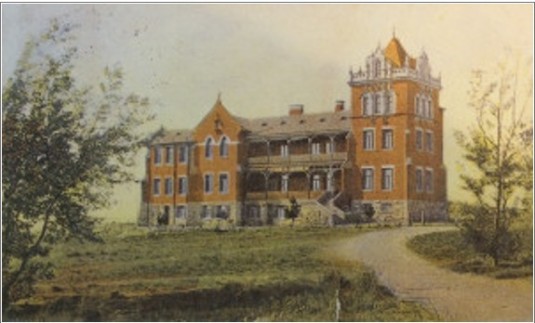
On the way to the city– “going into town” – the tram passed through the suburbs of Fairview and Jeppestown. Nearer town was a big Chinese grocery store called Yenson’s. People came from all over Johannesburg to shop at Yensons because things were very reasonably priced. Then the tram swept along its tracks on Main Street into the city centre with its smart shops, such as Ansteys, John Orrs and Stuttafords. Upmarket ladies of leisure from the suburbs, complete with matching hats, gloves, seamed stockings and hair newly set (sometimes blue-rinsed) whiled away their time, while their maids, gardeners and nannies kept their homes, gardens and offspring in pristine condition.
These matrons met their friends for morning tea in one of the big department stores. Starched tablecloths, silver cutlery, pleasing crockery and an attentive waiter who probably knew his clientele by name served them. They drank tea or coffee and selected fancy cakes from three-tiered revolving plates to the strains of a discreet pianist or Hammond/Lowry organist playing popular tunes of the day. They were further entertained with a dress show of the latest fashions on sale in the shop. The mannequins paraded round the tearoom, discreetly informing each table of the cost of these creations, which could be purchased in the dress department of the store. Thrupps, the upmarket grocery store had a branch next to John Orr’s in Pritchard Street, so the ladies often rounded off their morning in town by calling in at Thrupps to discuss the cost and quality of the Stilton cheese with the grocers, and take some delicacy home as a treat for their hard-working husbands to round off their evening meal. The centre of the city has probably changed in character more than any other part of Johannesburg. Many of the buildings remain, but they are used for different purposes today. The smart department stores have either closed or moved to shopping malls in the suburbs. The businesses which remain in the city have their solid security gates firmly locked at closing time. The city hall with its fine organ, was the venue for symphony and lunch-hour concerts fifty years ago. The symphony concerts are now presented at the Linder Auditorium in Parktown, and there are very few concerts held at the city hall these days. Even the fine central library has been closed for renovations recently. I wonder if it will every open again.  We moved into a flat in Samad Court at the corner of Queens Street and Langermann Drive. Samad Court is still here, but the flats were turned into offices some years ago. In the middle of 1958 we returned to the UK and when we came back my parents bought a house in Juno Street. We lived next to the tennis courts and bowling greens of the Kensington Club – I passed there the other day and it looks as though the tennis court next to our old house has disappeared. A half-built building has taken its place.
We moved into a flat in Samad Court at the corner of Queens Street and Langermann Drive. Samad Court is still here, but the flats were turned into offices some years ago. In the middle of 1958 we returned to the UK and when we came back my parents bought a house in Juno Street. We lived next to the tennis courts and bowling greens of the Kensington Club – I passed there the other day and it looks as though the tennis court next to our old house has disappeared. A half-built building has taken its place.
Our house had a coal stove in the kitchen where the food was cooked and we had a coal fire in the sitting room so we were never cold in winter as we often are today when we are trying to cut down on electricity usage, and there’s a shortage of gas for heaters. Periodically we would have coal delivered to our cellar from Mac Phail’s, whose slogan was “Mac won’t Phail you”. My mother had an account with the local butcher and Ford’s grocery store and she placed orders at these shops by phone. She had leisurely discussions with the butcher about the best cuts of meat, and with Mr Ford about the quality of his fruit and vegetables. These orders were delivered to the house, and a quart of milk arrived from the dairy early each morning, and a fresh loaf of bread with a tiny label stuck to it was delivered periodically by a local bakery.My closest friend at school was Daphne Darras, whose father owned the big plant nursery at the corner of Juno Street and Kitchener Avenue, the site of the Darras Shopping Centre today.
There were two cinemas in Kensington in 1957 – the Regent in Langerman Drive where Kentucky Fried Chicken is today, and the Gem at the other side of Kensington, bordering Fairview. I remember seeing Julie Andrews in Mary Poppins at the Regent many decades ago. My father took our dog for a walk every evening and sometimes he would walk to the library at Rhodes Park which was open until 8pm in those days. If he was still alive I don’t suppose he would risk taking these evening walks now. Saturday mornings On Saturday morning, the town was crammed with shoppers and cinema-goers. In 1957, girls wore wide skirts with starched hooped petticoats so it was a real crush walking along the pavement with all those skirts brushing against each other. Shoes with pointed toes and high thin heels made walking precarious, not to mention setting us up for corns and bunions by the time we reached middle age. My mother was adamant that I should wear sensible shoes with tickey (small) heels rather than hurple around in three-inch heels, probably putting my insides and my spine out of alignment into the bargain. The Jo’burg cinemas were impressive art deco palaces, but the décor was enshrouded in a smoky fug, in an era when smoking was still allowed in cinemas – but not in theatres. I certainly wouldn’t survive in a fug like that now with smoking banned in public places, but it didn’t worry me then. We saw Debbie Reynolds in Tammy and the Bachelor in the Colosseum in Commissioner Street, where the interior was created like a fairy castle with little turrets and windows on the walls, and the ceiling a night sky of deep blue, glimmering with stars.
There was also the Empire and Her Majesty’s. Both these cinemas were sometimes used as venues for live shows, variety, musicals and opera. Stars like Johnny Ray, Tommy Steele, Tommy Trinder, Max Bygraves and Cliff Richard graced the stage of one or other of these theatres in the fifties. The first variety show I saw in Johannesburg was British comedian, Tommy Trinder at His Majesty’s. I was mesmerised. “If its laughter you’re after, Trinder’s the name,” was his by-line. We sat in the dress circle and I was so excited by the experience that I missed my footing on the deeply carpeted steps at the interval, and, to my deep mortification, I rolled all the way down, unable to bring myself to a halt until I reached the bottom of the steps. A year or two later, Cliff Richard came out to do some shows with The Shadows at the Empire. I didn’t really like that kind of music but I went into the city with some school friends to find a mob of people blocking Eloff Street outside the old Carlton Hotel where he was staying. They were all screaming for their idol, “We want Cliff…”. At last the crowd was rewarded when he appeared briefly on the balcony of the hotel to wave rather diffidently at the massive crowd to the accompaniment of cheers and howls of mad adulation from his besotted fans, who were oblivious of the fact that they were causing a massive traffic jam in the centre of the city at rush-hour.
The Music Studios After I left school I took music lessons in town. I studied singing with famous British duettists, Anne Ziegler and Webster Booth in their studio on the eighth floor of Polliack’s building in Pritchard Street just off Eloff Street, and piano with Sylvia Sullivan whose studio was in Edinburgh Court in Von Brandis Street diagonally opposite the Jeppe Street post office.
- Anne Ziegler & Webster Booth (1963)
In those days most music teachers of any repute had studios in town and their pupils travelled by bus from all over Johannesburg. My parents bought me a leather music case and I was always interested to recognise fellow aspirant musicians with similar cases to mine on the way to their music lessons at one or other of the studios. These days music teachers work from their homes in the suburbs and pupils are usually taken to their lessons by car.
Sylvia Sullivan was a highly qualified and gifted teacher of singing and piano. She took her work very seriously and expected her pupils to do the same. She was very strict but always gave credit where it was due. She was at her studio for early morning lessons, then off to teach class music at Parktown Girls’ High School and Nazareth House, then back to the studio for more lessons after school finished, until late in the evening. Mrs Sullivan had a suite of rooms in Edinburgh Court, with grand pianos in the two bigger studios, and uprights in the smaller ones so that pupils could put in some last minute practice before their lessons. In addition to their private lesson she expected her pupils to go in to her studio early on a Saturday morning to work at ear tests, sight-reading and duets. Once a month she held a performance day when everyone had to play or sing to her and fellow pupils – quite an ordeal – but it got us used to performing in public and at examinations. The morning was rounded off with choir practice as members of the Sylvia Sullivan Choristers.
Anne and Webster had a large, airy studio, with an inter-leading office, and a tiny kitchen in the narrow hall, where pupils waited for their lessons if they arrived early. They had a Chappell Grand piano and a full-length mirror, so that pupils could look at themselves while they were singing, not only to make sure that their posture was good and they looked pleasant, but that they were opening their mouths on the high notes and singing with flat tongues no matter what vowel they sang. On the wall were innumerable pictures of themselves with various well-known celebrities, taken in their hey-day when they had been top of the bill on the variety circuit and, in addition, Webster had been one of the foremost oratorio soloists of his generation in the United Kingdom. When I was nineteen they asked me to accompany for Webster in the studio when Anne had other engagements. Acting as his studio accompanist was one of the highlights of my life.
Seeing the photograph of the Kensington Sanatorium in its early days reminded me of an incident when I was playing for Webster and he drove me home after we had been working in the studio one Saturday morning. My best friend, Ruth Ormond had tickets for the forthcoming recital by the distinguished soprano Maria Stader and she asked the Booths to accompany her to the concert. On Saturday morning, Webster came into the studio feeling tired. He grumbled about having to go to the Maria Stader concert that evening with Ruth and Anne when he would have preferred to have had an early night.
After we finished working he drove me home at lunchtime in his blue Hillman Minx convertible. It was a lovely warm day so he put the roof down. He said sombrely that it would be better if I could go to the concert in his place. But then he added, “It would break Ruth’s heart if I didn’t go.” Without being bigheaded he was perfectly aware of the power and influence he exerted over us lesser mortals.
Just as we were passing the Kensington Sanatorium he said, “It’s such a lovely day. Let’s just keep on driving all the way to Durban”. Lovely impossible idea.
Instead of driving to Durban, he dutifully took me home, and he and Anne went to the concert with Ruth that night as planned. I heard all about the concert on Sunday when Ruth and I went to the SABC to a studio recital given by Shura Cherkassky, the world-renowned pianist. I remember his brilliant performance of the Mozart sonata in B flat, which was in my own repertoire, and Moussorgsky’s Pictures at an Exhibition.
I remained close friends of Anne and Webster and Sylvia Sullivan until their deaths.
Changes in Kensington Houses in Queen Street and parts of Langerman Drive are largely used for business purposes today. I remember two elegant houses at the corner of Langerman Drive and Queen Street when they were large private residences. Windy Brow has been used for various business ventures, while the other was demolished completely to make way for a garage, but most of the original Kensington houses are still standing. Kensingtonians are lucky that the CBD shifted to Sandton rather than to the East, so the suburb has not changed as much as many other Johannesburg suburbs. When I look back on the South Africa of my youth and compare it with South Africa today, things have changed so much that I sometimes feel as though I am living in an entirely different country. But although there have been many, changes in Kensington, some for better, some for worse, it is still much as I remember it fifty odd years ago and retains an ongoing sense of community for its inhabitants.
3 March 2015 – Update Yesterday I had a phone call from the Rev. Fr. Stewart Peart, who had attended the funeral service of Mrs Marcella Gill at St Andrew’s Anglican Church, Kensington that morning. While he was in the area he managed to take some lovely photographs and I am posting them here. I am very grateful to Stewart for sharing these photographs with me. I was musical director at St Andrew’s for 13 years and retired at the end of 2005 so I was pleased to see that the church in Ocean Street looks very much as I remember it.
The next photograph is of the Atwell’s former home in Ocean Street. Unfortunately a large wall has been erected so one cannot see much of the house itself, but I’m sure it will still be of interest.
Many people wondered what had happened to the once-beautiful home at the corner of Langerman Drive and Queens Street – Windybrow. Stewart took two photographs of the building, which is now in a sad state of decay.
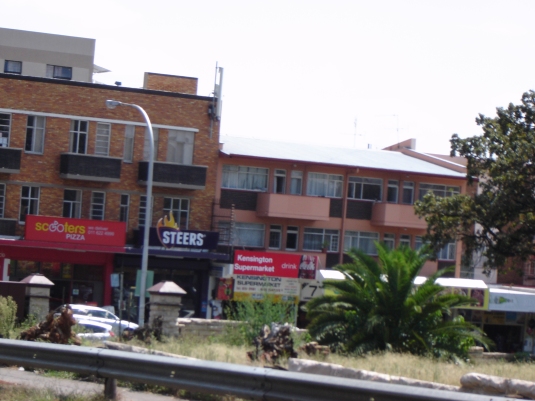
Windybrow, corner Langerman Drive and Queens Street, Kensington. Photo: Rev. Fr Stewart Peart. Sadly in a state of decay.
Updated – – 16 June 2015
Jean Collen ©

